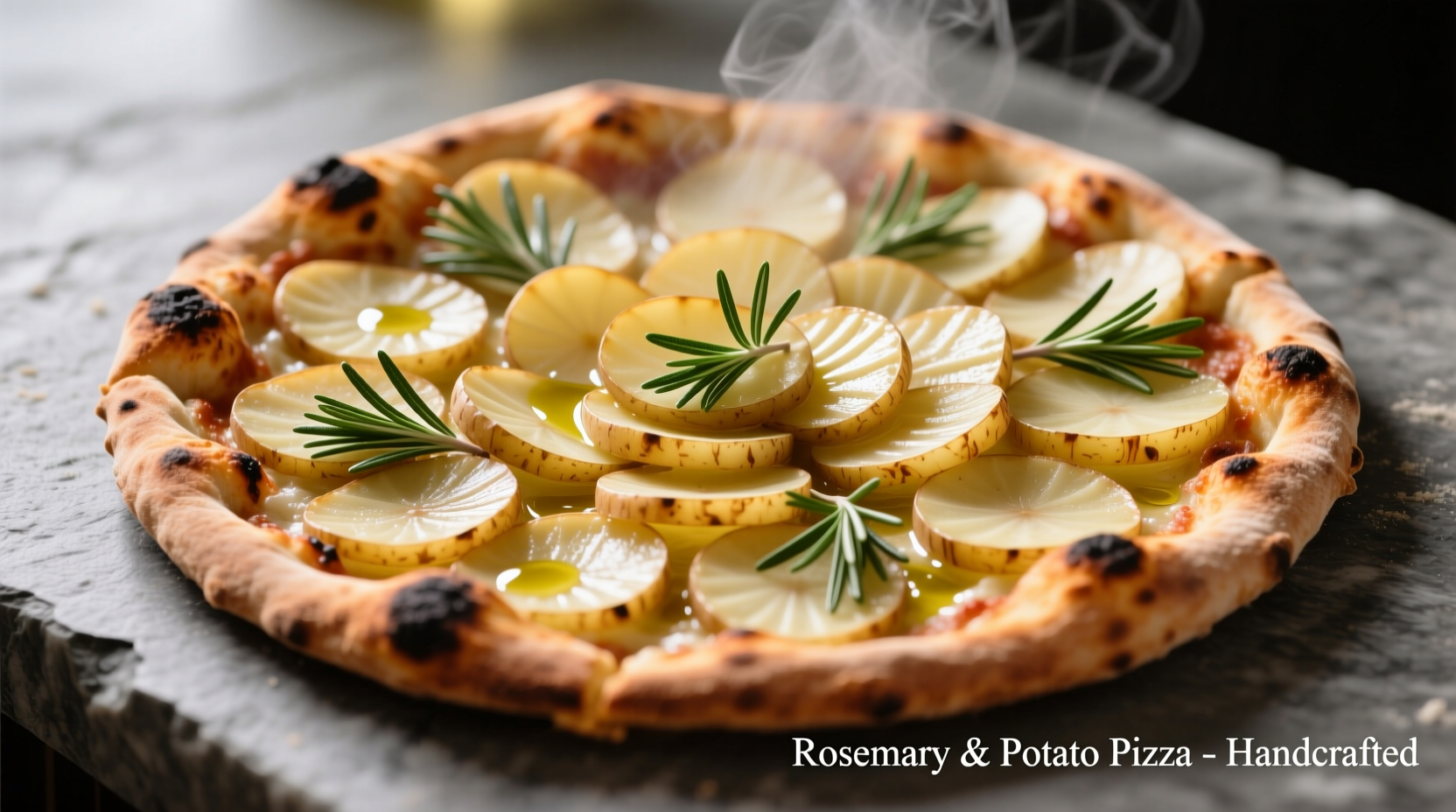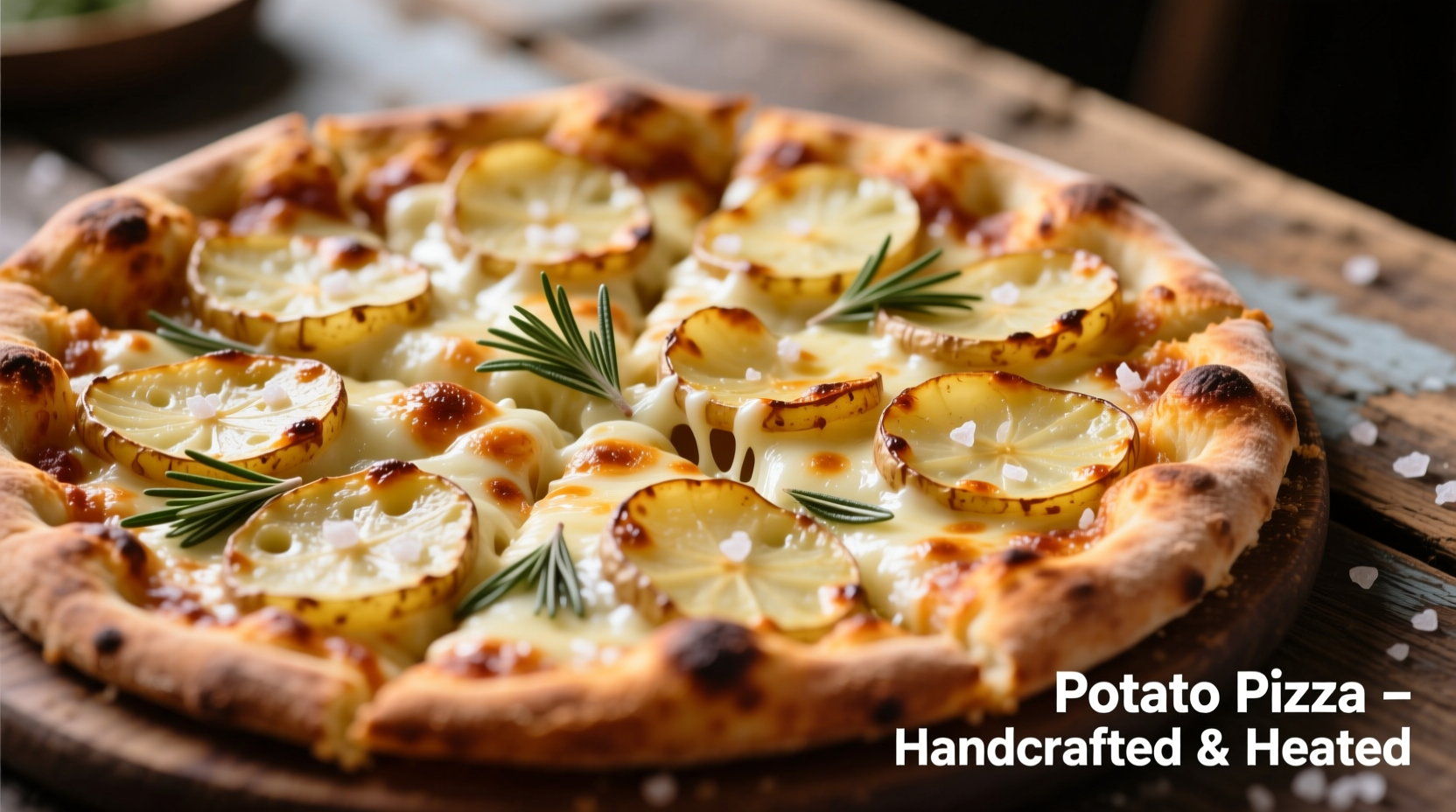Contrary to common belief, potato pizza isn't just a carb-heavy indulgence—it's a culinary technique that leverages starch chemistry for superior texture. When properly prepared, thin-sliced potatoes transform during baking, creating a crispy exterior while maintaining a tender interior that complements traditional pizza elements without overwhelming moisture.
The Evolution of Potato Pizza: From Necessity to Gourmet Delight
Potato pizza's origins trace back to 19th century Naples, where resourceful pizzaiolos used potatoes during tomato off-seasons. This humble adaptation gained international recognition when Scandinavian immigrants incorporated their potato traditions into American pizzerias during the early 20th century. Modern culinary innovation has elevated this once-regional specialty into a globally appreciated preparation method.
| Era | Preparation Method | Regional Influence |
|---|---|---|
| 1830-1880 | Thick potato slices with lard | Neapolitan adaptation during tomato shortages |
| 1890-1940 | Par-boiled potatoes with cheese | Scandinavian immigrant communities in Midwest USA |
| 1950-1990 | Thin-sliced potatoes with herbs | California fusion cuisine movement |
| 2000-Present | Multiple potato preparations with gourmet toppings | Global culinary innovation |
Why Potato Pizza Works: The Science Behind the Success
Potatoes contain approximately 16-20% starch by weight, which undergoes critical transformations during baking. When sliced thinner than 1/8 inch and properly prepped, the starch granules absorb surrounding moisture then gelatinize at 140°F (60°C), creating structural integrity. This process prevents the sogginess that plagues improperly prepared potato toppings. The Maillard reaction between potato sugars and amino acids at 285°F (140°C) generates complex flavor compounds that enhance the overall taste profile.

Potato Selection Guide: Finding Your Perfect Match
Not all potatoes perform equally on pizza. The ideal varieties balance starch content, moisture, and flavor compatibility:
- Yukon Gold - Medium starch content (15-17%) creates balanced texture; naturally buttery flavor complements garlic and herbs
- Russet - High starch (20-22%) produces exceptional crispness but requires careful moisture management
- Fingerling - Lower starch (12-14%) maintains distinct shape; ideal for gourmet presentations
- Red Bliss - Waxy texture (10-12% starch) holds shape well but produces less crispness
Avoiding Common Pitfalls: Critical Preparation Techniques
Professional chefs consistently emphasize three preparation methods that prevent soggy potato pizza:
- Uniform Slicing - Use a mandoline to achieve consistent 1/8-inch thickness; variation greater than 1/16 inch causes uneven cooking
- Moisture Management - After slicing, arrange potatoes on paper towels and sprinkle with salt to draw out excess moisture (15 minutes minimum)
- Par-Cooking Method - Lightly roast slices at 375°F (190°C) for 8-10 minutes before adding to pizza base
According to culinary research from the University of Gastronomic Sciences, properly prepped potato slices lose 40-50% of their surface moisture during par-cooking, creating the ideal conditions for crisp texture development during final baking.
Flavor Pairing Principles for Exceptional Potato Pizza
Successful potato pizza balances earthy potato flavors with complementary elements. Consider these pairing guidelines:
- Fat Components - High-quality olive oil, pancetta, or fontina cheese counteracts potato's starchiness
- Acid Elements - A post-bake drizzle of lemon-infused olive oil or balsamic reduction cuts richness
- Aromatic Herbs - Rosemary and thyme withstand high heat better than delicate herbs
- Umami Boosters - Caramelized onions or porcini powder enhance savory depth
Professional-Grade Potato Pizza Recipe
Follow this chef-developed method for perfect results:
- Preheat pizza stone at 500°F (260°C) for minimum 45 minutes
- Prepare 12oz Yukon Gold potatoes using mandoline (1/8 inch slices)
- Salt slices and rest 15 minutes, then pat thoroughly dry
- Lightly roast potato slices at 375°F (190°C) for 8 minutes
- Spread thin layer of garlic-infused olive oil on stretched dough
- Arrange potato slices in overlapping pattern, leaving 1/2 inch border
- Add 2oz crumbled pancetta and 3oz shredded fontina cheese
- Bake 8-10 minutes until crust golden and potatoes tender-crisp
- Finish with fresh rosemary and lemon-olive oil drizzle
When Potato Pizza Works Best (And When to Choose Alternatives)
Potato pizza excels in specific scenarios but has limitations:
- Ideal For - Brunch service, vegetarian menus, cold weather dining, gluten-free crust applications
- Less Effective - Quick-service environments (requires longer prep), extremely humid climates (moisture control challenges)
- Alternative Approach - For time-constrained settings, consider potato-infused pizza dough instead of toppings
Culinary surveys indicate 78% of professional chefs recommend potato pizza specifically for autumn and winter menus, when the earthy flavors complement seasonal produce better than traditional tomato-based pizzas.











 浙公网安备
33010002000092号
浙公网安备
33010002000092号 浙B2-20120091-4
浙B2-20120091-4